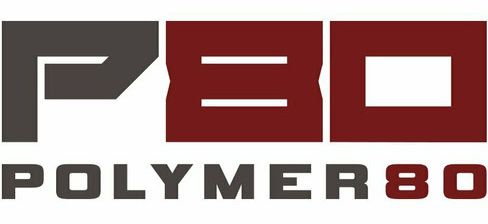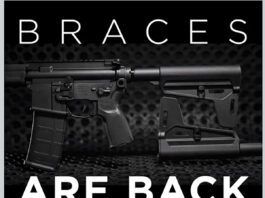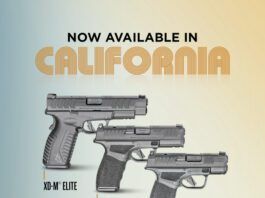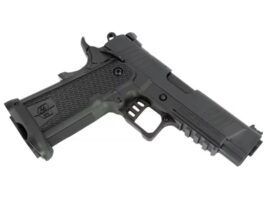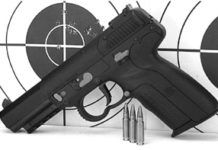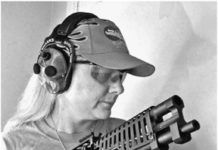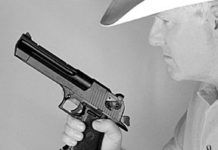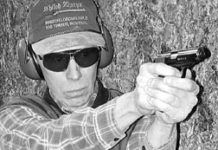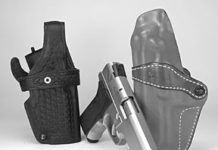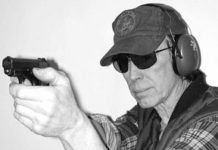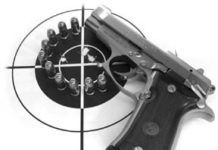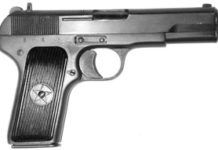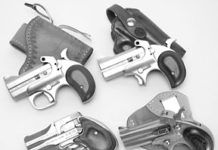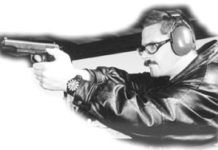Guns and Accessories Reviews: FN, Remington, and Others
The Five Seven pistol is lightweight and accurate, and we like it, though it shoots the small 5.7x28mm cartridge. For rifle-accuracy upgrades, check out Don Bower's handiwork.
We Test Two AR-Style Pistols from Bushmaster and OA
The $1020 OA 98 from Olympic Arms is a steady performer, but Bushmaster's $862 Carbon 15 Model 97 pistol stumbles.
Big-Bore Semi-Automatic Pistols: Desert Eagle, Wildey Face Off
For some people all that a gun needs is charisma, mainly due to its appearance in a number of Hollywood movies. If the Minneapolis-based firm of Magnum Research has achieved nothing else, then the Desert Eagle's place in history has been assured by its striking profile and big hole in the muzzle.
Surplus Pocket Pistols: Makarov Outpowers Walther and CZ .32s
The more powerful 9x18 import surplus gun is our pick, but there were no bad apples in this small-gun matchup.
Police Trade-In Pistols: Bargains, Busts or Buyers Beware?
One of the alternatives to the high cost of a new pistol is to buy used. In lieu of finding a creampuff that was only fired by a little old lady on Sundays, one source of used pistols is the police trade-in market. Through firms like Interstate Arms (978-667-7060), pistols formerly owned by active law-enforcement personnel are available to dealers at a wholesale price. The catch for the typical consumer is that a dealer, i.e. an FFL holder, must arrange for transfer. This also means that retail price can vary according to fees, typically 10 to 15 percent of the gun's cost with a $25 minimum. The prices we list are a dealer's cash price, or the prices we paid to get the guns without FFL fees.
Keep in mind, however, that not every dealer is willing to go through the hassle of ordering a gun of unpredictable condition which may result in you rejecting it, which can cost return shipping charges and possibly a re-stocking fee. Be that as it may, we decided to order four .40 S&W pistols that have been commonly found in uniformed service. They were the Ruger KP94DAO, the Glock Model 22, Smith & Wesson's Model 4046, and the SIGArms P229.
We felt buying these guns was a calculated risk. We were able to ascertain their age by checking the serial numbers with the manufacturers. New, each pistol was good enough to be chosen for police departments nationwide. But why were they traded in? Did the design of these pistols become outdated or were they beginning to show their age with more evidence than mere holster wear? Let's look under the hood and take them for a ride.
Pocket Pistol Pair-Off: We Test A Set of .380 Surplus Handguns
The .380 cartridge has been around since early in the last century. It was another of John Browning's designs, and has been known as the 9mm Kurz, 9x17, 9mm Browning Short, and .380 ACP. We also know it as the .380 Automatic, or simply the .380 Auto. It's been chambered in a host of small autoloading pistols, some of them quite famous, such as Walther's PPK.
The .380 is not a cartridge many of us would pick for all-around use. It's hardly a plinking cartridge, because of the relatively high cost of ammunition, and because the pistols that chamber it are generally not all that accurate. Reloaders don't exactly flock to the diminutive cartridge, for a variety of reasons. Ammunition manufacturers have produced some excellent fodder in recent years for the tiny guns, but none of it can make a mountain-size "stopper" out of the molehill .380 Auto.
Guns for the cartridge abound, some of them expensive, some of them — like the ones tested here — discontinued for a variety of reasons. Some .380s are great firearms, and some would make better table lamps. We acquired four examples of discontinued .380-Auto handguns, all of which pop up on the used market from time to time. They were all locked-breech pistols, with barrel locks similar to that of a full-size 1911 .45 Auto. Our test guns included the Colt Mustang and its lighter twin the Mustang Pocketlite, both of which cost in the $500 range; an Iver Johnson Pony ($250) that was similar in size and overall shape to the Colts, and a close clone of the Pony from Firearms International ($300). Here are our findings.
.380 Pistols: Berettas Cheetah Wins Small-Gun Showdown
Smaller guns have always had a certain appeal. In some cases it was just the aspect of miniaturization that captures our imagination. In other cases it was the reassurance of a highly concealable weapon. One niche of such guns were semi-auto .380s, which have long been popular sidearms because of their flat, short footprint and sufficient, if not outstanding, power.
Pistol Showdown: CZ and Tokarevs Match Up In Bargain Test
Fourteen hundred feet per second from a pistol in 1930? Make that 1896! In the late 1800s Hugo Borchardt designed a pistol, and a cartridge for it, that became the Model 1893 Borchardt pistol. Borchardt was an American, but his pistols were made by Loewe in Germany. (The Borchardt pistol evolved into the Luger pistol, which used a shorter, less-powerful .30-cal. cartridge.) A hotter loading of Borchardt's cartridge was adopted by Mauser for his 1896 pistol, known as the "broomhandle." Velocity was in the 1,400 fps realm, and it was the fastest handgun cartridge around for many years.
Derringer Match-Up: Are These Pocket Guns Right For You?
In our view, these limited-capacity pistols have limited usefulness for most shooters. Reviewed: American Derringer DA 38 and Model 1, and Bond Arms' Texas Defender and Cowboy Defender.
.38 Supers: Pleasant-To-Shoot Power Packed Into 1911 Pistols
The Browning 1911 single-action pistol and big 0.450- to 0.452-inch bullets are synonymous. So is a level of power that demands respect, not to mention the recoil that goes with it. But it doesn't have to be that way. You can enjoy the benefits of the 1911 design with what we found to be a pleasing flash and satisfying jolt simply by rolling back the clock almost a hundred years ago.
How To Evaluate A Used 1911 Pistol Before You Buy It
The unending popularity of John Browning's Model 1911 design is due in equal parts to its simplicity, reliability and durability. No other handgun has been subjected to more words, tinkering, accessorizing or imitation and still survived—let alone remain in demand.
After World Wars I and II, Korea and Vietnam, thousands of 1911 pistols found homes with the Doughboys and GIs who'd carried them in combat. In the late forties and early fifties, Government Models were being sold out of arsenals for less than dirt. Some of them had seen action. Some had never been through basic training. Harbor no hopes of buying any used M1911 or M1911A1 at such prices today, unless it's a total junker.
If...
Thompson/Center Encore Our Choice In A .223 Rem. Single Shot Pistol
The three entries in this shootout are prime examples of the multiple caliber concept. Magnum Researchs Lone Eagle is available in 15 centerfire calibers and has a rotating breech that field artillery veterans may find familiar. Its caliber is changed by installing a different barreled-action on the pistols grip assembly. Thompson/Centers Encore and Contender are both...

























